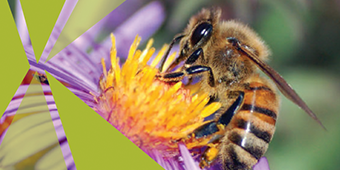- Author:
- Katie Garrett
- Subject:
- Arts and Humanities, Science
- Material Type:
- Activity/Lab
- Level:
- Lower Elementary, Upper Elementary
- Tags:
- License:
- Creative Commons Attribution
- Language:
- English
Backyard Bug Observation & Experiments

Overview
A fun activity to help you explore the world right around you.
Helpful Tips
- You can find bugs almost anywhere! Start your bug hunt by looking in bushes or trees, under rocks, and between the sidewalk and the grass.
- You might even find some bugs in your home! Bugs are an important part of their ecosystems, so make sure you gently handle any bugs you find. Keep your hands flat and open to avoid squishing your bug.
- Only touch bugs you know are safe. Ask an adult for help if you are unsure.
Activity Supplies
- Jar/Plastic Container
- Hand Lens
- Pencil
- Color Pencils
- Notebook
Activity Steps
- Once you have located the bugs you would like to observe, carefully place them in your jar or plastic container. Then, use your hand lens to start making some observations. How would you describe your bug? What do you notice about your bug? Describe the way your bug looks. How does your bug move? Can you name any special adaptations your bug has? What predators do you think your bug might have?
- Write down your observations in your notebook. Draw some pictures of the bugs you are observing.
- Think of some questions that you have about your bugs, then design an experiment to see if you can find answers to your questions. Does your bug prefer being in light or dark areas? What type of food does your bug prefer? Does your bug prefer to be in dry or wet environments? When designing your experiments, try to use the scientific method: think of a question, write a hypothesis, gather materials, create a procedure, collect data, and find your results.
- Once you are done with your observations and experiments, return your bugs where you found them.
Activity Guide
Download the full activity guide here!